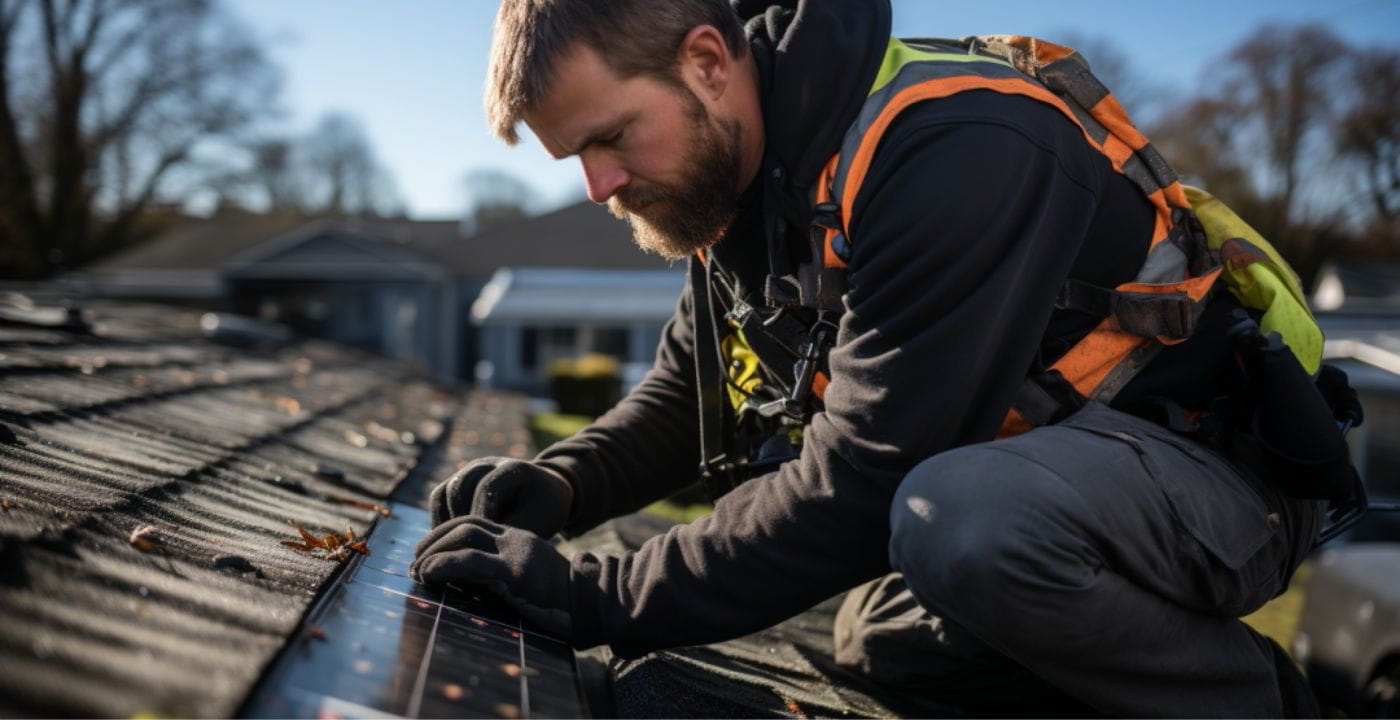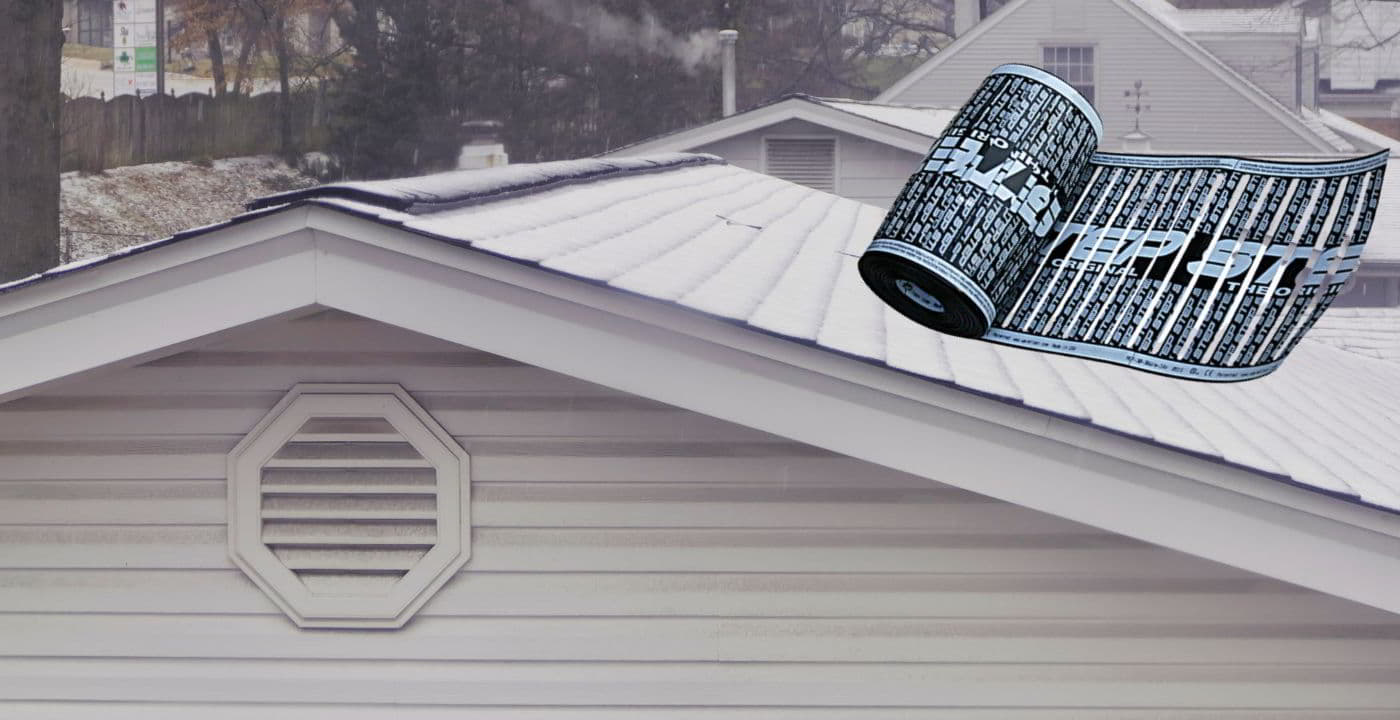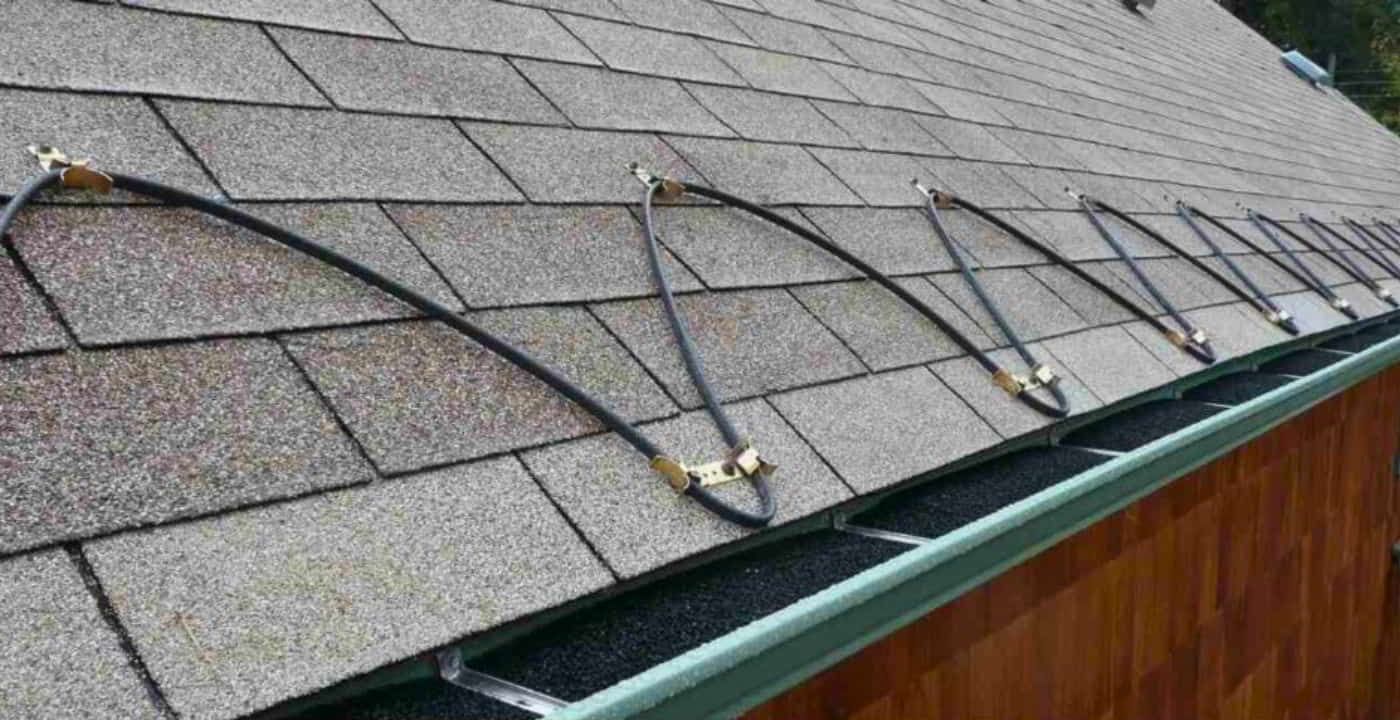

Navigating the complexities of installing heat tape on a roof can be a daunting task. From the technical specifics and necessary tools and equipment, to the vitally important safety considerations, there’s a lot of information to take on board. But, whether you’re looking to tackle this project yourself, or seeking to understand the process before hiring a professional, we are confident this guide will serve as a complete resource to ensure your roof is well-equipped to handle the challenges of winter weather.

Heat tape, particularly for roofs, is typically installed by professionals who specialize in roofing, electrical work, or home maintenance. Here are the common options for who installs heat tape:
Since heat tape installation involves electrical connections, a licensed electrician is often the best choice. They have the necessary skills and knowledge to safely handle the electrical aspects of the installation.
Some roofing contractors offer heat tape installation as part of their services. They are familiar with different roof types and can ensure that the heat tape is installed in a way that complements your roof’s design and structure.
Companies that specialize in home maintenance or gutter services may also provide heat tape installation, especially since part of the installation involves gutters and downspouts.
Companies that specialize in home maintenance or gutter services may also provide heat tape installation, especially since part of the installation involves gutters and downspouts.
While it’s generally recommended to have heat tape installed by professionals due to the electrical risks and the need for proper installation, some homeowners with electrical knowledge and experience choose to do it themselves. However, this should only be attempted if one is fully aware of the safety protocols and installation procedures.

Heat tape installation involves three separate stages: measuring , installation, and testing . In this article we break down every step of each of these stages to give you a complete guide for roof heat tape installation.
Start by measuring the length of your roof’s eaves, the parts that overhang beyond the walls. This initial measurement forms the basis for determining how much heating cable you’ll need.
If your home has gutters, measure their entire length. Include this in your total since the cables should run inside the gutters to prevent the buildup of ice.
Also, measure the length of your downspouts, especially if you’re in a region prone to heavy snowfall. It’s recommended to extend the heating cables into downspouts to avoid them clogging with ice.
For homes with roof valleys, where two roof slopes meet and form a V-shape, measure these areas. Their lengths should be added to your overall measurement, as these spots are critical for preventing ice dams.
Look at the width of your roof overhang. For every foot of overhang, add an extra foot of cable for each 20-foot section of eaves.
This extra length is necessary for the zigzag pattern of installation, which helps ensure better coverage and efficiency.
When laying out cables in a zigzag pattern, consider the vertical drop of each zigzag. This pattern is advised for better heat distribution.
Decide on your preferred spacing between the zigzag drops, typically ranging from 12 to 18 inches.
Multiply the number of drops by their length, then add this number to your base measurement.
It’s prudent to add an extra 10 – 15% to your total cable length. This extra length accounts for any unique roof features or the need to route cables to reach power sources efficiently.
Consider the location of your nearest power source. If it’s a significant distance from where your heating cable begins, you may need to either extend the cable length or use a suitable outdoor-rated extension cord.
Roof heating cables come in various wattages, typically ranging from 5 to 12 watts per foot.
Select a wattage that matches your climate’s needs—higher wattage means more heat output.
Ensure that your home’s electrical system can safely support the wattage of the heating cables you choose.
To determine the total length of heating cable needed, add up all these measurements: the length of roof edges, gutters, downspouts, roof valleys, the extra length for the zigzag pattern, and any additional length for installation specifics.
Roof Heat Tape Installation Should Only Be Done By Qualified Professionals. Attempting To Install Heat Tape Without Professional Expertise Risks Property Damage, Serious Injury, And Even Death.

Once you have all of your measurements, equipment, and the correct amount of cable it is time to start fitting the heat tape to the roof.
To ensure this is done both correctly and safely each of the following steps should be observed and followed.

Testing heat tape is vital to ensure functionality, performance and safety.
The first test should be carried out prior to any installation. This is the visual inspection.
Begin by thoroughly inspecting every inch of the heating cable. This step is crucial to identify any potential issues that could compromise the functionality and safety of the system. Look for signs of wear and tear, such as fraying, cracks, or any visible deterioration in the cable’s exterior.
Pay close attention to areas where the cable bends or loops, as these spots are more prone to damage due to the stress of bending.
Check for any discoloration or burn marks along the cable, which can indicate overheating or electrical issues. It’s also essential to look for breaks or cuts in the cable. Even small nicks can significantly impact the cable’s performance and safety.
After the visual inspection you should test that the heat tape is working properly by turning it on. You don’t want to go through the entire installation process only to discover a fault when you try to use it for the first time.
The first step in the Power-On Test is to activate the heating cables. This can be done by plugging them into an electrical outlet or switching on the power via a dedicated switch.
Ensure that the power source is reliable and that the outlet or switch is functioning correctly.
If your heating cable system is equipped with a thermostat , it may require some adjustments to initiate the test.
Thermostats typically have settings that trigger the heating cables based on ambient temperatures.
For testing purposes, you might need to lower the thermostat setting to simulate colder conditions that would normally activate the cables
After the system has been powered on, allow a few minutes for the cables to heat up. This warming period is necessary for the cables to reach a temperature where their performance can be assessed.
Carefully touch the cable in different sections to gauge if it’s uniformly warming up. It’s important to note that you should touch the cable briefly and cautiously, as it can become quite hot and may cause burns if touched for an extended period.
Feel for consistent warmth along the length of the cable. Inconsistent heating or cold spots can indicate potential issues with the cable or the power supply.
Check the warmth at different points, especially in areas that are more exposed or prone to colder temperatures. The effectiveness of the heating cable can vary depending on its placement and exposure.
To test whether a heat cable is functioning properly, it’s necessary to measure the insulation resistance between the bus wires and the cable’s grounding braid.
This should be done during installation using a megohmmeter with a minimum capability of 500 V dc , though a 1000 V dc megohmmeter is preferred.
This is also the test you need to run post installation if for any reason the heat tape is not functioning as it should.
The insulation resistance should be at least 30 megohms , a standard that applies regardless of the cable’s length.
The testing process involves several steps:
Following these steps accurately is essential for a successful test and to ensure the heat cable will function as intended.